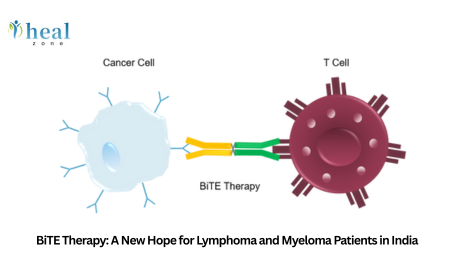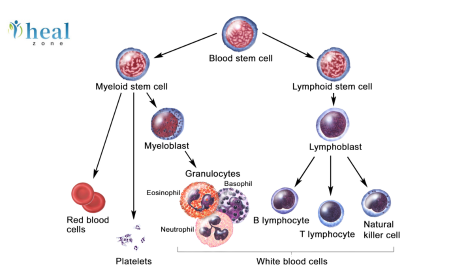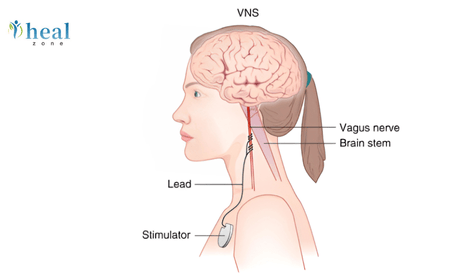Contact us
How Gamma Knife Radiosurgery is Being Explored to Treat Severe Depression
By Shaivana Bano
21 September 2025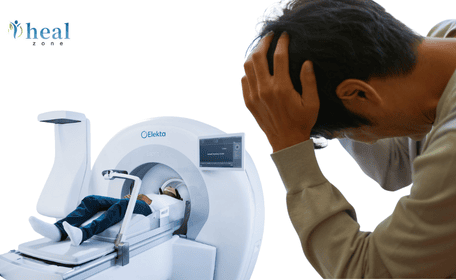
- Understanding Severe Depression and Its Challenges
- What is Gamma Knife Radiosurgery?
- Neuroscience Behind Depression: Why Target the Brain with Radiosurgery?
- Gamma Knife for Psychiatric Disorders: A Historical Perspective
- How Gamma Knife Treats Depression: The Science
- Clinical Evidence: What Do Studies Show?
- Comparing Gamma Knife to Other Neuromodulation Methods
- Ethical and Safety Considerations
- Future Directions and Innovations
- Patient Perspectives and Case Studies
- Why India for Gamma Knife Treatment in Severe Depression?
- Conclusion
Depression is not just sadness—it is a debilitating medical condition that affects millions worldwide, cutting across age, culture, and socioeconomic boundaries. For most people, depression can be managed with therapy, medication, or a combination of the two. However, a significant subset of patients—often referred to as suffering from treatment-resistant depression (TRD)—do not respond to conventional interventions. For these individuals, the burden is overwhelming, often leading to loss of quality of life, social withdrawal, and in some tragic cases, suicide.
In recent decades, neuroscience and medical technology have converged to explore novel ways of addressing TRD. Among the emerging methods is Gamma Knife radiosurgery, a non-invasive neurosurgical technique traditionally used to treat brain tumours, vascular malformations, and functional disorders such as trigeminal neuralgia. Researchers are now investigating its potential to modulate brain circuits implicated in severe depression.
This blog will explore the science, clinical evidence, mechanisms, ethical considerations, and future potential of Gamma Knife treatment in depression—laying out a roadmap of how precision neurosurgery may offer hope for some of the hardest-to-treat psychiatric conditions.
Understanding Severe Depression and Its Challenges
What is Severe Depression?
Severe depression is more than persistent sadness—it is marked by profound impairment in emotional, cognitive, and physical functioning. Symptoms may include:
- Persistent feelings of hopelessness and despair
- Extreme fatigue and loss of motivation
- Suicidal ideation or attempts
- Impaired decision-making and concentration
- Anhedonia (inability to feel pleasure)
The Problem of Treatment Resistance
Standard treatments include antidepressants, psychotherapy (like cognitive behavioural therapy), and electroconvulsive therapy (ECT). Despite advances, up to 30% of patients do not respond adequately to these interventions. This subset is diagnosed with treatment-resistant depression (TRD).
For such patients, alternative strategies—deep brain stimulation (DBS), vagus nerve stimulation, and now Gamma Knife radiosurgery—are under exploration.
What is Gamma Knife Radiosurgery?
The Basics
Contrary to its name, the Gamma Knife involves no incision and no blade. Instead, it uses focused beams of gamma radiation to deliver precise doses to targeted brain regions. Hundreds of low-dose beams converge on a specific point, producing a high-intensity effect without damaging surrounding tissue.
Traditional Uses
Gamma Knife is widely used to treat:
- Brain tumours (benign and malignant)
- Arteriovenous malformations (AVMs)
- Trigeminal neuralgia
- Acoustic neuromas and pituitary tumours
Its application in psychiatric disorders is newer but builds on decades of clinical use in other brain conditions.
Neuroscience Behind Depression: Why Target the Brain with Radiosurgery?
Depression is increasingly understood as a network disorder rather than the result of dysfunction in a single brain region. Neuroimaging and neurobiological studies highlight key circuits:
- Subcallosal cingulate gyrus (Brodmann Area 25): Hyperactivity linked to negative mood and despair.
- Anterior cingulate cortex (ACC): Regulates emotional processing.
- Prefrontal cortex: Associated with executive function and emotion regulation.
- Amygdala and hippocampus: Involved in fear, memory, and stress responses.
Treatment-resistant depression may stem from dysregulation in these interconnected circuits. Interventions like Gamma Knife aim to modulate or lesion overactive pathways, restoring balance.
Gamma Knife for Psychiatric Disorders: A Historical Perspective
The concept of using radiosurgery for mental illness is not entirely new. In the mid-20th century, psychosurgery (like frontal lobotomy) was used, albeit controversially. With the advent of imaging and precision tools, stereotactic radiosurgery revived the concept of neurosurgical intervention with far greater safety and accuracy.
Key milestones:
- 1950s–1960s: Psychosurgery (lobotomies) fell out of favour due to poor outcomes and ethical concerns.
- 1970s–1980s: Radiosurgery began to be explored as a non-invasive alternative.
- 1990s–2000s: Gamma Knife was successfully applied in obsessive-compulsive disorder (OCD) trials.
- Recent years: Pilot studies investigate the Gamma Knife for TRD, targeting circuits like the anterior cingulotomy and capsulotomy.
How Gamma Knife Treats Depression: The Science
Target Selection
In TRD, the Gamma Knife often targets:
- Anterior cingulate cortex (ACC): To reduce hyperactivity driving negative emotional states.
- Anterior limb of the internal capsule (ALIC): Pathway connecting prefrontal cortex to limbic regions; modulation may restore mood regulation.
- Subcallosal cingulate (Area 25): A known “hotspot” in depression circuitry.
Mechanism of Action
Gamma Knife works by inducing focal lesions or functional disruption in overactive pathways. Over time, this can:
- Normalise dysfunctional circuits
- Reduce hyperconnectivity between mood-regulating areas
- Alleviate symptoms of despair, rumination, and hopelessness
Unlike medications, which act broadly, Gamma Knife offers pinpoint precision.
Clinical Evidence: What Do Studies Show?
Early OCD Success
Gamma Knife gained traction after positive outcomes in refractory OCD, where anterior capsulotomy produced long-term symptom relief with relatively few side effects.
Emerging Depression Trials
While data is still limited, several small-scale studies and case series report:
- Symptom reduction in patients with severe TRD.
- Sustained improvement in some cases, lasting years.
- Acceptable safety profile, with fewer cognitive side effects compared to older psychosurgical methods.
For example:
- A study targeting the anterior cingulate cortex with Gamma Knife radiosurgery showed meaningful improvements in depressive symptoms for treatment-resistant patients.
- Capsulotomy approaches report response rates of 40–60%, a promising result in cases that were previously considered untreatable.
Limitations of Current Evidence
- Small sample sizes
- Limited randomised controlled trials
- Need for long-term safety monitoring
Comparing Gamma Knife to Other Neuromodulation Methods
| Medications (SSRIs, SNRIs) | Non-invasive | Modulate neurotransmitters | First-line depression treatment | Limited effect in TRD, side effects |
| ECT | Non-surgical | Induces seizures under anaesthesia | Severe depression, suicidality | Cognitive side effects, stigma |
| TMS (Transcranial Magnetic Stimulation) | Non-invasive | Magnetic stimulation of the cortex | Moderate depression | Requires multiple sessions, moderate efficacy |
| DBS (Deep Brain Stimulation) | Invasive (surgery, implants) | Electrical stimulation of deep brain targets | Parkinson’s, experimental in TRD | Risk of infection, device dependence |
| Gamma Knife Radiosurgery | Non-invasive, one-time | Targeted lesioning | TRD, OCD (experimental) | Irreversible, needs precise targeting |
The Gamma Knife sits between non-invasive stimulation and highly invasive DBS, offering a balance of precision and minimal physical intrusion.
Ethical and Safety Considerations
Irreversibility
Unlike DBS, which can be turned off, Gamma Knife lesions are permanent. This raises ethical questions about consent and long-term consequences.
Risk of Side Effects
Potential risks include:
- Cognitive changes
- Emotional blunting
- Rare radiation-related complications
Ethical Framework
Use must be guided by:
- Strict eligibility (only severe, treatment-resistant cases)
- Transparent informed consent
- Ongoing psychiatric and neurological monitoring
Future Directions and Innovations
- Personalised Targeting: Advances in neuroimaging (fMRI, DTI) enable individualised mapping of depression circuits.
- Adaptive Radiosurgery: Real-time imaging may improve precision.
- Combination Therapies: Gamma Knife treatment may be enhanced by the addition of medications, psychotherapy, or TMS.
- Expanded Indications: Research into anxiety, PTSD, and addiction.
- Larger Clinical Trials: Needed to validate safety, efficacy, and long-term impact.
Patient Perspectives and Case Studies
Real-world reports highlight cases where individuals, after years of failed therapies, experienced dramatic symptom relief post-Gamma Knife capsulotomy. While not universal, these accounts illustrate the therapy’s potential life-changing impact for selected patients.
Why India for Gamma Knife Treatment in Severe Depression?
- Advanced Hospitals – Apollo, Fortis, Medanta, Max, with the latest Gamma Knife systems.
- Expert Doctors – Internationally trained neurosurgeons & psychiatrists with proven experience.
- Affordable Care – Costs 3–4 times lower than the US/Europe with no compromise on quality.
- Medical Tourism Friendly – Visa support, interpreters, Arabic-speaking patient desks, and full travel assistance.
- Research & Innovation – Active clinical studies in treatment-resistant depression and psychiatric neurosurgery.
- Easy Accessibility – Major airports, smooth logistics, and multilingual staff for international patients.
Conclusion
Gamma Knife radiosurgery represents a bold and innovative frontier in the treatment of severe depression. While still experimental, early findings suggest that it may offer hope for patients with no other treatment options. By precisely targeting malfunctioning brain circuits, the Gamma Knife could help rewire despair into resilience.
As research continues, this technology sits at the intersection of neuroscience, psychiatry, and ethics—challenging us to consider how far we are willing to go in engineering relief for one of humanity’s most devastating illnesses.
For now, Gamma Knife in depression remains a specialised, last-resort option, but its potential is profound. In the coming years, it may reshape our understanding of the brain, mood, and the very essence of healing.
Contact us
Written by
B.Sc. & M.Sc. in Medical Imaging Technology
Featured Doctors

Dr. Hemant Sharma
Chairman
Orthopedic and Joint Replacement Surgeon
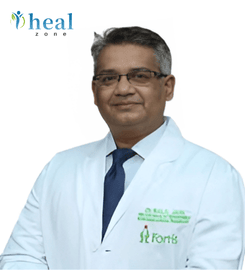
Dr. Salil Jain
Senior Consultant
Nephrologist
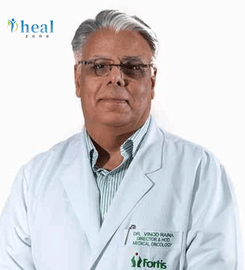
Dr. Vinod Raina
Chairman
Medical Oncologist

Dr. IPS Oberoi
Chairperson
Orthopedic and Joint Replacement Surgeon

Dr Sujoy Bhattacharjee
Chairman
Orthopedic and Joint Replacement Surgeon

Dr. Rajesh Verma
Senior Consultant
Orthopedic and Joint Replacement Surgeon
Latest Blogs
Reviews
I am Fadel Abu Muhammad from Tal Afar, Iraq My father had a brain tumor. We traveled to India to Accord Specialty Hospital, New Delhi, through a resident professor, Muhammad, Dr. Vikram, who called for a laparoscopic tumor removal operation. Thank God I thank the translator, the doctor, and all the hospital staff.
Posted On
I am Muhammad Reda from Baghdad, Iraq I was suffering from weakness in my left hand. I underwent tests and it turned out that I had a brain tumor. The translator, Muqeem Muhammad, contacted us and we traveled to India. I had a neuronavigation procedure performed by Dr. Sandeep Vashya Praise be to God, the operation was completed successfully on the computer At Fortis Hospital New Delhi I thank the translator and the doctor
Posted On
All our gratitude and appreciation to the wonderful translator Mohammed Muqeem, who was truly a great support and companion during our journey for my mother’s treatment in India. He was extremely helpful, deeply understanding of all our needs, patient, and dedicated in his work, which eased a lot of the hardship and challenges we faced being away from home. His presence with us was not just about translating words but about offering real human support in every situation and every moment. May God bless him and reward him greatly for all he has done for us.
Posted On
I'm Emad Mohammed Khadir from Iraq. I was suffering from cirrhosis and liver cancer. I came to Fortis Hospital in India to see Dr. Ankur Bahil, a consultant oncologist, with the help of our translator, resident professor Mohammed Al Hindi. Thank God, we received our chemotherapy doses. The doctor and all the hospital staff were very kind and helpful. May God bless them all. Thank you.
Posted On
I am Redha Fadel from Nasiriyah, Iraq. I had a bone tumor, osteosarcoma. I traveled to India to see Dr. Ankur, a cancer specialist at Fortis Hospital, with the help of Hill Zone Medical Tourism Company, Professor Muqeem Muhammad Al Hindi. I thank you for your humanity and services.
Posted On
Peace be upon you. I am from Iraq. My brother is suffering from a tumor in his left thigh (osteosarcoma). We came to Al-Nahda for treatment. We stayed at Fortis Hospital for two months. We are now going to Iraq and will return to India to complete the treatment and the joint replacement surgery. I would like to thank the polite Indian translator, Muqeem Mohammed Al-Hindi. He was our brother before he was a translator and he helped us a lot with my brother's illness. Thank you, Muqeem. Thank you, Fortis Hospital. Thank you, Dr. Ankur.
Posted On
Peace be upon you, I'm from Iraq. My name is Majid Mazhar Kazim. My brother was suffering from tumors, so we contacted a resident professor, Muhammad Al-Hindi, and we sent him medical reports. He received us from the airport in New Delhi. I highly recommend him to Iraqi patients. He is helpful and well-mannered. He didn't hold back on us and didn't leave us alone from the first day until the last. He also took us to the airport. I thank them all.
Posted On
I am Mohammed Kazim from Iraq, from Babylon. My brother Mushtaq was suffering from meningitis. We came to India to Fortis Hospital through our resident professor, Mohammed, the director of Hill Zone Medical Services. I thank them for their kind treatment and translation. It was an enjoyable and fruitful trip. Praise be to God.
Posted On
I am from iraq tilafar, i came to India for my treatment an immune disease, i am thankful to Mr Muqeem and hospital staff, Marego Asia Hospital
Posted On
I am from Iraq. My son was suffering from Hirayama disease. I called Heal Zone, and they arranged our treatment journey. Now my son is in good health, and his finger movement has come back.
Posted On


